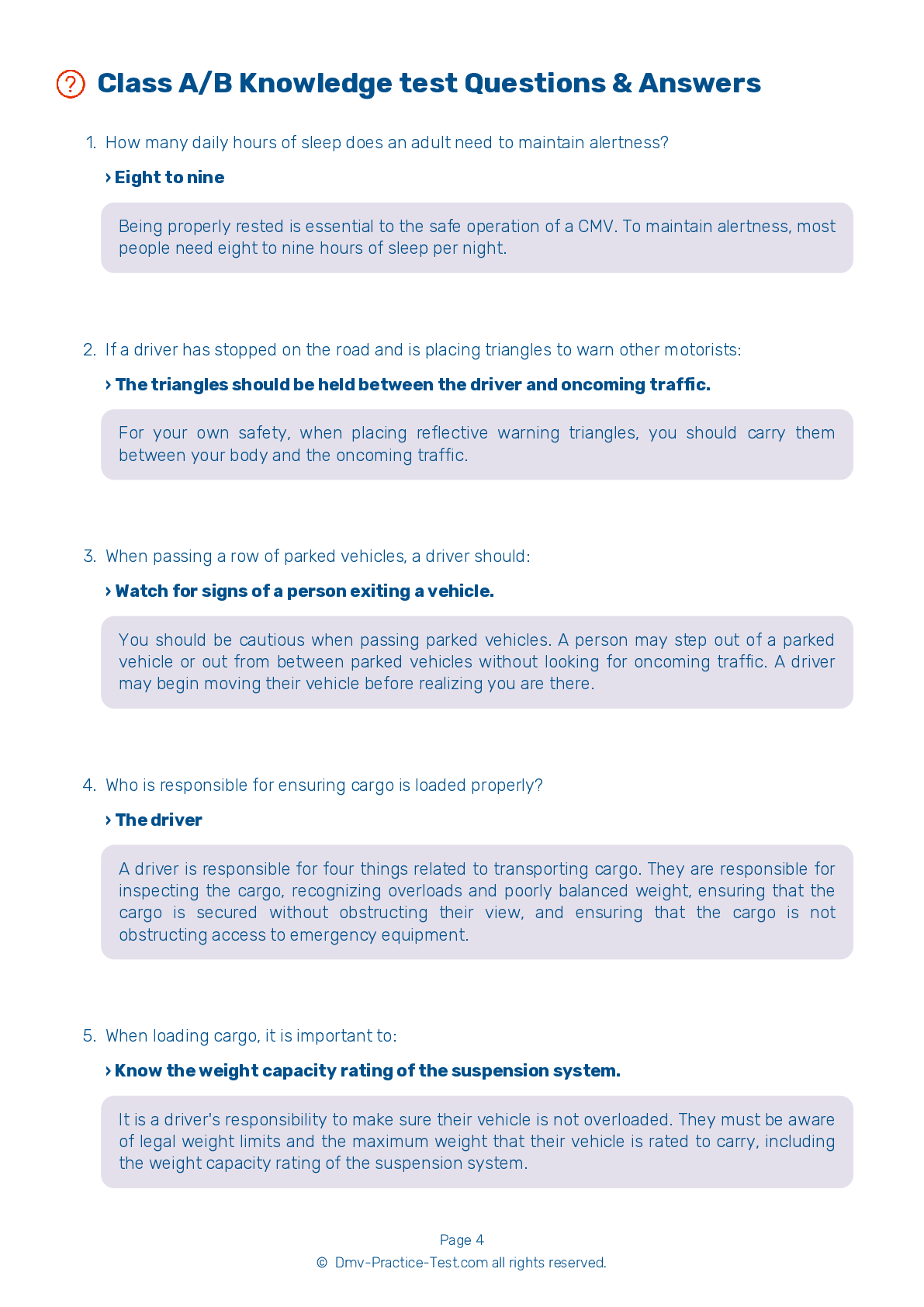Class A Driving Test | Virginia 2025 #1 Page 7 of 7
Train for FREE online with our Virginia class A license test. The official exam test consists of several obligatory parts, with all of them checking your knowledge of different blocks of road rules. If you need to obtain a VA CDL class A permit in 2025, practice as much as possible. Free sample tests published on our website will help you check and improve your knowledge and boost your grades. Please bear in mind that CDL class A requirements may vary from state to state.
43 . When passing a row of parked vehicles, a driver should:
You should be cautious when passing parked vehicles. A person may step out of a parked vehicle or out from between parked vehicles without looking for oncoming traffic. A driver may begin moving their vehicle before realizing you are there.
44 . During a vehicle inspection test, the applicant will be asked to:
To obtain a CDL, you must take a vehicle inspection test, during which you will inspect a vehicle under the supervision of an examiner.
45 . When encountering a railroad crossing during the driving test, you should:
During the on-road driving test, you must not stop, change gears, pass another vehicle, or change lanes while any part of your vehicle is in a railroad crossing.
46 . Regulations regarding commercial vehicle weight and load securement may vary from state to state. Regarding these regulations:
Federal, state, and local regulations governing commercial vehicle loads vary from place to place. Be sure that you are always aware of the laws for the state in which you are driving.
47 . When stopping, the brake pedal should be:
When braking, push the pedal down gradually to ensure that the vehicle comes to a smooth, safe stop.
48 . In cool weather, as the temperature begins to rise and ice begins to melt:
As the temperature begins to rise and ice on the road begins to melt, the road surface will often become even more slippery. Water from the slight melting will sit on top of the ice, decreasing the available traction even more. Always decrease your speed and drive with caution when traveling on slippery surfaces.
49 . Mirrors should:
It is important to check your mirrors regularly when driving, both to be aware of other traffic and to observe problems that may arise on your own vehicle.
50 . Within 10 minutes of stopping on the side of the road, you must:
If you must stop on the side of the road, you must place the appropriate emergency warning devices within 10 minutes of stopping.
See the exact questions that will be on the 2025 Virginia DMV exam.
99.2% of people who use the cheat sheet pass the FIRST TIME
Lillian MCcranie explains how our CDL study guide was helpful in passing the exam and recommends it to everyone.
Cameron tells us how he purchased the CDL exam, and found it to be a useful tool which helped him pass the exam and find a job.



